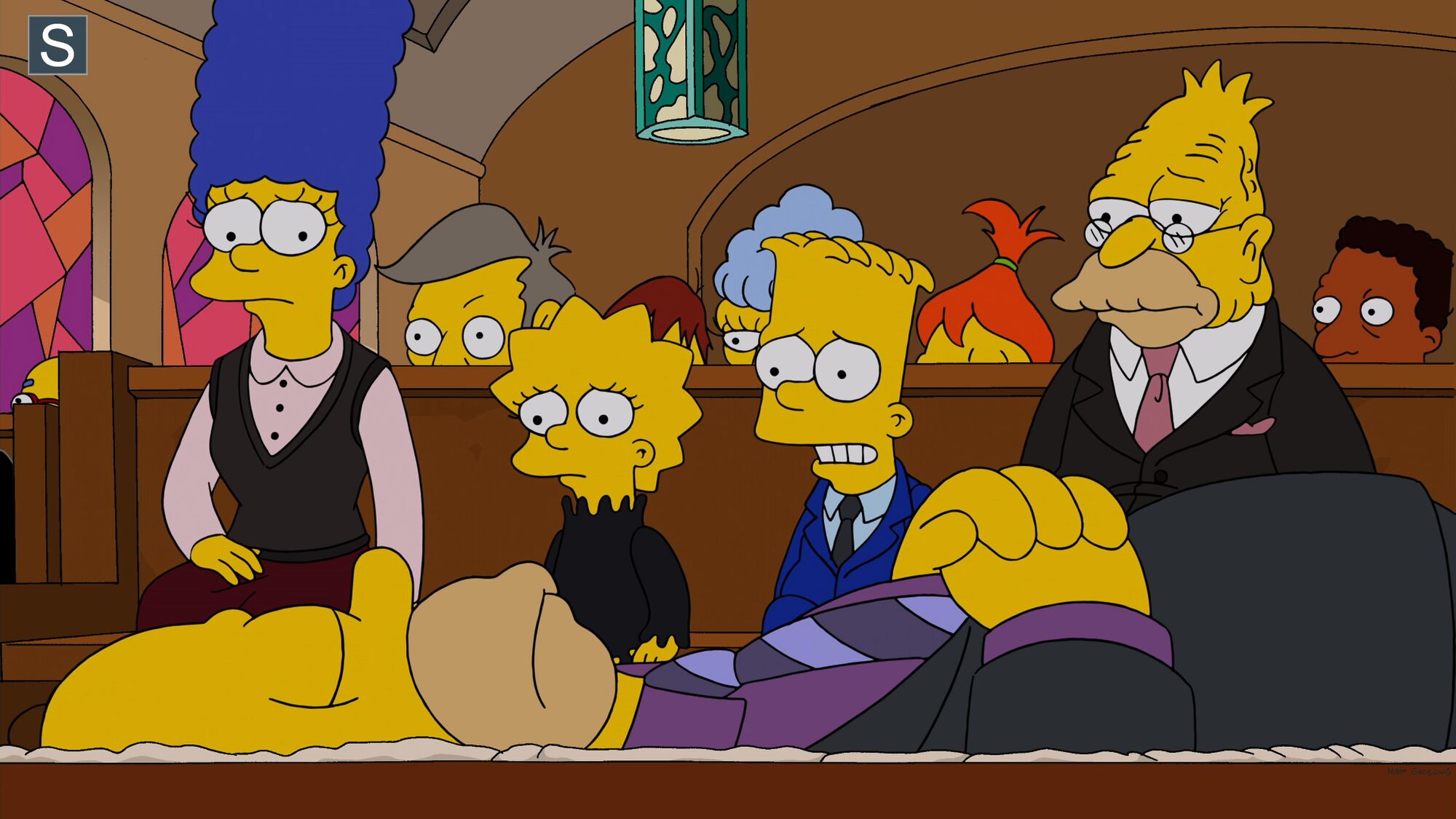(image borrowed from Simpsons Wiki)
The wake before a funeral became most famous with the Irish who tended to have celebrations for the recently deceased. Basically a way of remembrance and a celebration of their life. These "parties" tended to run long for they were a way to ensure that the dead was truly dead and no one was buried alive.
(image borrowed from Country Living Magazine)
The Romans were the ones to introduce the lighting of candles at funerals to ward off evil spirits and so that the deceased would be guided by the light to paradise. Funeral is derived from the Latin word for "torch". It wasn't until the 15th century that people started placing candelabras on the coffin as it was carried to the burial ground. Therefore, the pallbearers (and the rest of the funeral party) had to walk slowly so that the candle flame wouldn't go out.
So I guess in turn this is why cars like the picture above drive slowly too.
(image borrowed from Mankato Times)
In the 16th century ships would fly their flags at halfway point as a sign of submission during battle. It was said that the flag was at "half-mast". When they reached port, the flag remained at half-mast to honor those they lost during the battle. It wasn't until the 17th century that the custom moved to land when the flags would be lowered to half-mast to honor those who lost their lives in battle.
(image borrowed from Shutterstock)
X became the kiss signed at the bottom of a letter based on the time during the medieval ages when most people couldn't read or write. Whether one could write their name or not, it was customary to sign an X at the end to symbolize the cross of St. Andrew. Without this X, the contract would be invalid. To prove their intentions, they were also required to kiss the cross and in a roundabout way, this is why kisses were symbolized by an X.
That's interesting since I always thought the X should be the hug and the O should be the kiss! I still think they should be that way too! LOL!
(image borrowed from Lisa Eve)
Kissing a "boo-boo" better dates back to the early days of medicine when one would have to suck out the venom from a snake bite. The act of putting one's lips to the infected or "hurting" area is thought to bring relief to the ailment.
That's kind of interesting and rather believable too!
(image borrowed from PBS)
In 10 BC the first coins were produced by the Lydians, but it wasn't until another 900 years passed that flipping a coin turned into a decision maker. Julius Caesar's head was on one side of every Roman coin during his reign. Such was the reverence for the emperor that when he was absent the big problems were solved by flipping a coin. If it landed "heads up" it was thought that through the guidance of the gods that Caesar would've agreed with whatever was being decided upon.
That's really interesting! I never knew that about the flip of a coin!
The wake before a funeral became most famous with the Irish who tended to have celebrations for the recently deceased. Basically a way of remembrance and a celebration of their life. These "parties" tended to run long for they were a way to ensure that the dead was truly dead and no one was buried alive.
(image borrowed from Country Living Magazine)
The Romans were the ones to introduce the lighting of candles at funerals to ward off evil spirits and so that the deceased would be guided by the light to paradise. Funeral is derived from the Latin word for "torch". It wasn't until the 15th century that people started placing candelabras on the coffin as it was carried to the burial ground. Therefore, the pallbearers (and the rest of the funeral party) had to walk slowly so that the candle flame wouldn't go out.
So I guess in turn this is why cars like the picture above drive slowly too.
(image borrowed from Mankato Times)
In the 16th century ships would fly their flags at halfway point as a sign of submission during battle. It was said that the flag was at "half-mast". When they reached port, the flag remained at half-mast to honor those they lost during the battle. It wasn't until the 17th century that the custom moved to land when the flags would be lowered to half-mast to honor those who lost their lives in battle.
(image borrowed from Shutterstock)
X became the kiss signed at the bottom of a letter based on the time during the medieval ages when most people couldn't read or write. Whether one could write their name or not, it was customary to sign an X at the end to symbolize the cross of St. Andrew. Without this X, the contract would be invalid. To prove their intentions, they were also required to kiss the cross and in a roundabout way, this is why kisses were symbolized by an X.
That's interesting since I always thought the X should be the hug and the O should be the kiss! I still think they should be that way too! LOL!
(image borrowed from Lisa Eve)
Kissing a "boo-boo" better dates back to the early days of medicine when one would have to suck out the venom from a snake bite. The act of putting one's lips to the infected or "hurting" area is thought to bring relief to the ailment.
That's kind of interesting and rather believable too!
(image borrowed from PBS)
In 10 BC the first coins were produced by the Lydians, but it wasn't until another 900 years passed that flipping a coin turned into a decision maker. Julius Caesar's head was on one side of every Roman coin during his reign. Such was the reverence for the emperor that when he was absent the big problems were solved by flipping a coin. If it landed "heads up" it was thought that through the guidance of the gods that Caesar would've agreed with whatever was being decided upon.
That's really interesting! I never knew that about the flip of a coin!








I love all of these fun facts! How interesting about the flag. I've been curious about how the half-mast thing got started.
ReplyDelete